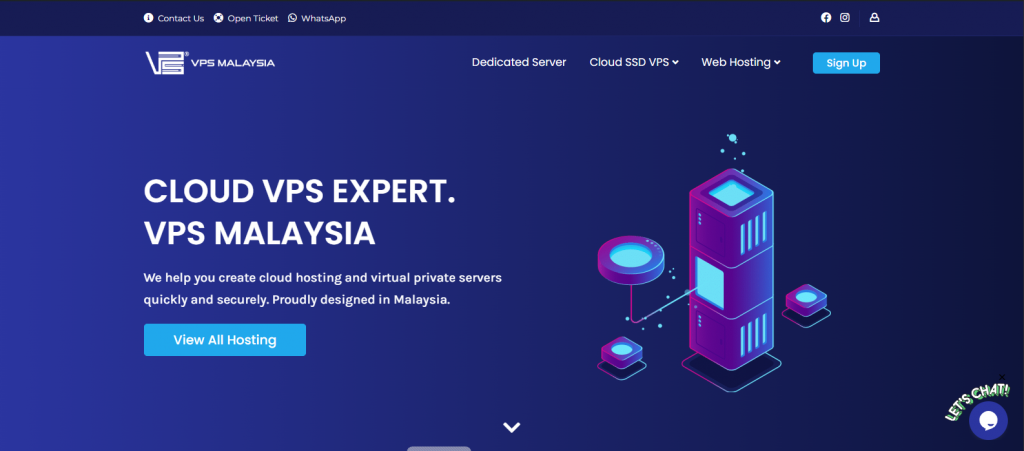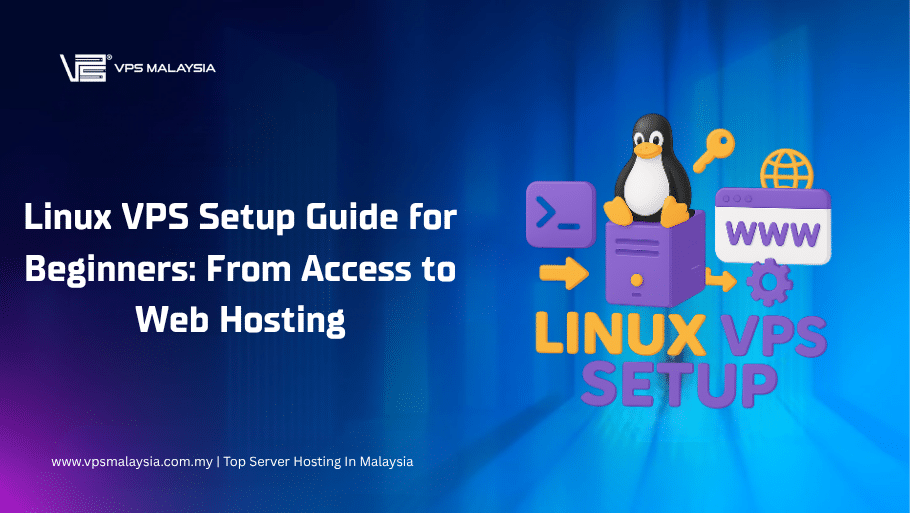1. SSD Hosting Benefits
For developers, bloggers, and digital agencies seeking fast, secure, and scalable hosting solutions in Malaysia, SSD-powered Linux VPS is a game-changer. In this guide, we walk you through every step from initial server access to launching your website, while exploring why SSD hosting is crucial for performance.
2. SSD vs Traditional HDD
Solid state drives (SSDs) are storage devices that offer significantly faster data access speeds compared to traditional hard disk drives (HDDs). While HDDs use spinning disks to read/write data, SSDs rely on flash memory with no moving parts, which drastically improves speed and reliability.
Performance Differences:
- SSDs deliver read and write speeds up to 10 times faster.
- Reduced latency improves server response time.
- Supports higher traffic loads without lag.
A. Why does it matter for VPS hosting?
When you host your website on a Linux VPS, your server’s storage directly impacts how fast your website loads, processes scripts, or handles user requests. With SSDs, these processes become significantly more efficient, ensuring a smoother experience for your visitors.
3. Website Speed & SEO
Website speed impacts both user engagement and search engine rankings. SSD VPS hosting enhances performance by improving:
A. Faster Load Times:
Search engines like Google prioritize websites that load quickly. SSD VPS helps you meet core web vitals benchmarks and increase website speed by improving:
- First Contentful Paint (FCP).
- Time to Interactive (TTI).
- Largest Contentful Paint (LCP).
This helps meet Google’s core web vitals benchmarks, essential for higher SEO rankings.
B. SEO Benefits:
- Reduced bounce rate due to better performance.
- Improved rankings for mobile and desktop searches.
- Better user engagement and conversions.
💡 Case Study: A Malaysian tech blogger saw a 40% boost in load speed after migrating to SSD hosting, resulting in a 20% increase in organic traffic within weeks.
4. Reliability & Downtime Reduction
Reliability is crucial for anyone running a business or blog online. SSD VPS outshines traditional setups in minimizing downtime and maintaining data integrity.
A. Advantages:
- Lower failure rates: SSDs last longer and fail less often than HDDs.
- Faster recovery: Data backups and restoration are quicker.
- High uptime: Essential for agencies with client sites or bloggers with growing audiences.
B. System Stability:
Linux VPS powered by SSD ensures stable performance even during traffic spikes. It’s ideal for developers deploying web apps or agencies managing multiple client websites.
5. Cost-to-Performance Ratio
While SSDs used to be considerably more expensive, the cost gap has narrowed, making them accessible even for beginners.
A. Investment Benefits:
- Speed: Better speed and uptime without a significant price increase.
- Long-term ROI: Fewer crashes, lower maintenance, better SEO = more revenue.
- Ideal for scaling: SSD VPS supports higher resources with fewer bottlenecks.
For bloggers monetizing their site or agencies building client portfolios, SSD hosting delivers consistent performance and peace of mind.
6. VPS Malaysia SSD Plans
If you’re in Malaysia, choosing a local SSD VPS provider like VPS Malaysia brings added advantages: low latency, localized support, and competitive pricing.

A. Plan Highlights:
- SSD-powered storage for all VPS plans.
- Various Linux OS options like Ubuntu, CentOS, and Debian.
- Instant provisioning with full root access.
- Malaysian data center for faster regional connectivity.
7. From Access to Web Hosting: A Setup Guide
Here’s how to go from accessing your SSD Linux VPS to launching your website live:
Step 1: Access Your Server via SSH
- Open Terminal (Mac/Linux) or use PuTTY (Windows).
- Run:
ssh root@your-vps-ip. - Enter your password. You’re now in!
Step 2: Initial Server Setup
Update your system:
sudo apt update && sudo apt upgrade -yAdd a new user (optional but secure):
adduser yourusername
usermod -aG sudo yourusernameStep 3: Install a Web Server Stack
sudo apt install apache2 mysql-server php libapache2-mod-php -yOr install a full LAMP/LEMP stack depending on your web app.
Step 4: DNS & Domain Setup
- Log in to your domain registrar.
- Point your domain’s A record to your VPS IP.
- Allow propagation (usually within a few hours).
Step 5: Upload Your Website
Use scp or an FTP client to upload files:
scp -r yoursite/* root@your-vps-ip:/var/www/htmlRestart Apache:
sudo systemctl restart apache2Step 6: Going Live
Once DNS propagation is complete, navigate to your domain to see your site live!
8. Conclusion
SSD-powered Linux VPS is more than just fast storage; it’s the backbone of a high-performance website setup. Whether you’re a developer deploying apps, a blogger growing your audience, or an agency managing client work, SSD hosting ensures speed, stability, and scalability. VPS Malaysia’s SSD plans give you the tools to go live confidently with full control, localized support, and superior performance.
Ready to take your project live? Start with VPS Malaysia’s SSD VPS plans today.
FAQs: Linux VPS Setup in Malaysia
Q1: Is SSD VPS worth it for a small blog or personal site?
Absolutely. SSD VPS ensures faster performance, better uptime, and future scalability. Even for small sites, the benefits justify the modest cost difference.
Q2: Can I install WordPress on my Linux VPS?
Yes! After setting up your web server and PHP/MySQL stack, you can download and configure WordPress manually or via tools like WP-CLI.
Q3: Which Linux distribution is best for VPS hosting?
Ubuntu is beginner-friendly and widely supported. CentOS and Debian are also stable choices, depending on your familiarity and project needs.
Q4: How do I secure my Linux VPS after setup?
- Change the default SSH port.
- Set up a firewall (e.g., UFW or iptables).
- Disable root login (use sudo users).
- Enable automatic updates and fail2ban.
Q5: Do I need a control panel like cPanel or Plesk?
It depends on your preference. CLI gives more control and speed, but if you’re unfamiliar with server commands, control panels simplify management.
Q6: How long does it take to go live with a Linux VPS?
If you’re familiar with the steps, it can take under an hour. Beginners may take 2–3 hours, including DNS propagation time.
Q7: What if I face issues with setup or performance?
VPS Malaysia offers local support, guides, and 24/7 assistance to help you troubleshoot and optimize your setup.
Q8: Can I scale my VPS plan later?
Yes. VPS Malaysia allows you to scale resources like CPU, RAM, and storage without downtime.
Q9: What backup options do I have on SSD VPS?
You can configure automatic backups using tools like rsync or use VPS Malaysia’s backup services for off-site security.
Q10: How does SSD VPS compare to cloud hosting?
Both offer scalability and speed. SSD VPS gives more control with dedicated resources, while cloud hosting is better for dynamic scaling and global deployments.


Leave a Reply